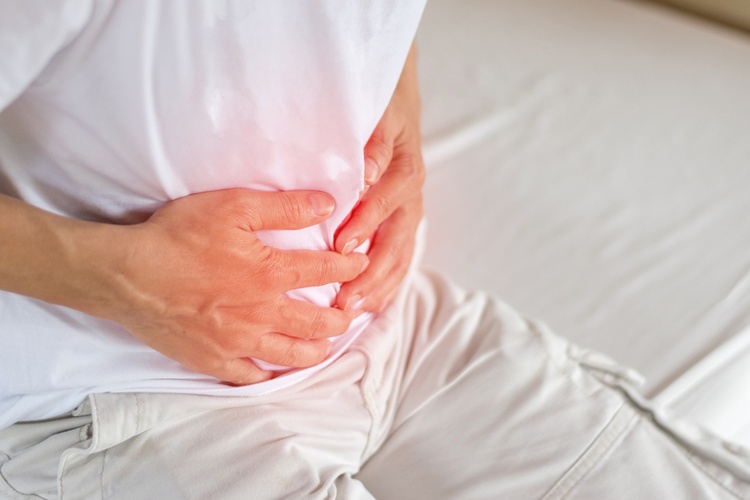What Does Crohn's Stool Look Like? Color, Smell, and More
Crohn's disease can cause noticeable changes in bowel habits, including stool appearance, smell, and texture. These changes may offer clues about inflammation, flare-ups, or complications. While everyone's experience is different, recognizing unusual signs in your stool could help you manage symptoms more effectively and know when to seek medical advice. Understanding the signs might support better daily health decisions.

Understanding Crohn’s Disease: Key Features and Symptoms
Crohn’s disease is characterized by inflammation that can affect any part of the digestive tract, from mouth to anus, though it most commonly impacts the end of the small intestine (ileum) and the beginning of the colon. This inflammation penetrates deep into the layers of affected bowel tissue, leading to various digestive symptoms. Common indicators include persistent diarrhea, abdominal pain and cramping, fatigue, reduced appetite, unintended weight loss, and fever. The chronic inflammation can disrupt normal digestive processes, changing how nutrients are absorbed and how waste products are formed, which directly affects stool characteristics.
Color: From Pale to Deep Brown—What to Watch For
Stool color can vary significantly in people with Crohn’s disease and often provides clues about what’s happening in the digestive system:
-
Pale or clay-colored stools may indicate inflammation in the small intestine or bile duct obstruction. When bile doesn’t reach the intestines properly, stools lose their characteristic brown color.
-
Yellow stools frequently signal malabsorption issues, particularly of fats, which is common when Crohn’s affects the small intestine where most nutrient absorption occurs.
-
Dark or tarry black stools (melena) suggest bleeding in the upper digestive tract, as blood darkens as it moves through the intestines.
-
Bright red blood in stool typically indicates active inflammation or bleeding in the lower intestinal tract or rectum.
-
Green stools may result from food moving too quickly through the large intestine, not allowing bile to break down completely.
The location and severity of inflammation in Crohn’s disease directly influence stool color, making this an important monitoring tool for both patients and healthcare providers.
Smell: Stronger and More Pungent Than Usual
The odor of stool in Crohn’s disease often differs from normal bowel movements, becoming noticeably stronger and more unpleasant. This change occurs for several reasons:
During flare-ups, inflammation interferes with the digestive system’s ability to process food properly. Malabsorption of nutrients, particularly fats, leads to steatorrhea (fatty stools), which typically produce a more pungent smell. Additionally, bacterial imbalances in the gut, often triggered by Crohn’s inflammation or exacerbated by treatments like antibiotics, can alter the fermentation process in the intestines, creating different and often stronger odors.
Some patients describe the smell as particularly foul, rancid, or sulfuric during active disease periods. These odor changes can sometimes precede visible symptoms of a flare-up, potentially serving as an early warning sign of increased disease activity.
Other Changes: Texture and Frequency and Urgency
Beyond color and smell, Crohn’s disease significantly impacts stool texture and bowel habits:
Texture variations are common and may include:
-
Loose, watery stools during active inflammation
-
Ribbon-like or pencil-thin stools when inflammation causes narrowing in the intestines
-
Floating stools (indicating high fat content from malabsorption)
-
Mucus-containing stools, signaling intestinal inflammation
-
Undigested food particles, suggesting rapid transit time or malabsorption
Frequency and urgency changes often severely impact quality of life:
-
Increased bowel movements (sometimes exceeding 10-15 daily during flares)
-
Tenesmus (feeling of incomplete evacuation)
-
Sudden, urgent needs to defecate with little warning
-
Alternating patterns of diarrhea and constipation
-
Nocturnal bowel movements that disrupt sleep
These changes reflect the underlying inflammation, altered gut motility, and malabsorption characteristic of Crohn’s disease. Monitoring these patterns can help both patients and healthcare providers assess disease activity and treatment effectiveness.
Common Complications and Additional Symptoms
Stool changes in Crohn’s disease sometimes signal complications that require prompt medical attention. Understanding these warning signs is essential for disease management:
Fistulas—abnormal connections between the intestine and other organs or skin—can cause drainage of mucus, pus, or stool from unusual places, such as near the anus. Intestinal strictures (narrowing) may lead to constipation, cramping, and thin-caliber stools. Perianal complications, including abscesses and fissures, can cause significant pain during bowel movements and may result in bloody discharge.
Other significant digestive symptoms that may accompany stool changes include severe abdominal pain, nausea and vomiting, loss of appetite, and significant unintentional weight loss. Non-digestive manifestations like joint pain, eye inflammation, skin rashes, and mouth sores can also occur alongside gastrointestinal symptoms, reflecting the systemic inflammatory nature of Crohn’s disease.
Treatment Approaches for Abnormal Stool Symptoms
Managing the stool changes associated with Crohn’s disease requires a comprehensive treatment strategy. Medications form the foundation of treatment, with options including:
-
Anti-inflammatory drugs (mesalamine, corticosteroids)
-
Immunosuppressants (azathioprine, methotrexate)
-
Biologics (infliximab, adalimumab, ustekinumab)
-
JAK inhibitors (newer options like tofacitinib)
These medications aim to reduce inflammation, heal the intestinal lining, and normalize bowel function. Beyond pharmaceuticals, dietary modifications often help manage symptoms. Low-residue or specific carbohydrate diets may reduce bowel frequency during flares, while ensuring adequate hydration replaces fluids lost through diarrhea.
For severe cases or complications, surgical interventions might become necessary. Procedures can include bowel resection (removing damaged portions), strictureplasty (widening narrowed sections), or fistula repair.
This article is for informational purposes only and should not be considered medical advice. Please consult a qualified healthcare professional for personalized guidance and treatment.




